A killer hurricane makes landfall in your area, causing widespread devastation. The once familiar neighborhood outside your doors now resembles an apocalyptic wasteland. Thanks to solid planning, preparations, and maybe a little luck, you survived. But what now? Although these storms can be tremendously destructive; the tropical cyclone aftermath can often be just as challenging.
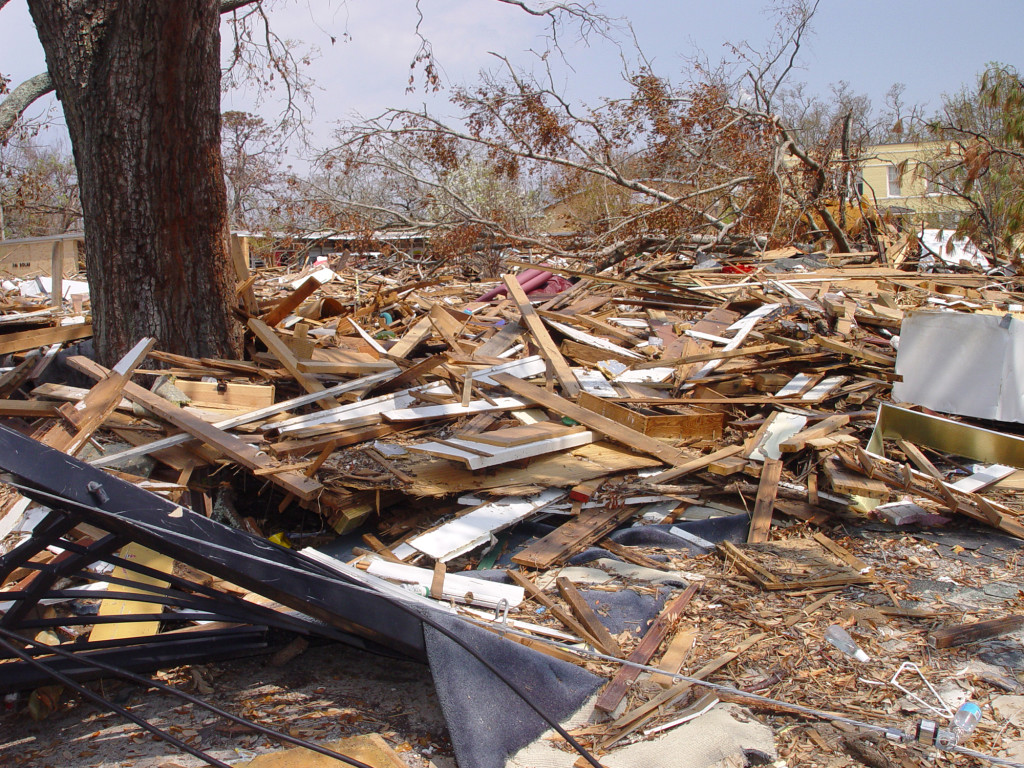
After any major storm, roads, streets, and highways will be covered with incredible amounts of disaster debris, making even short-distance travel dangerous, or downright impossible. Under these conditions it’s best to stay put. But when circumstances require you to leave the relative safety of your home, having the right gear, supplies, and the proper mindset can mean the difference between a safe journey and getting stranded in the middle of a very ugly situation.
This isn’t about bugging out and fighting your way out of Dodge, it’s about essential mobility in the aftermath of a crisis. Whether it’s getting to a hospital or reaching a friend/relative who’s in trouble, getting from point A to point B will be far easier if you know what to expect, what to do, and what gear to have in your kit.
What to Expect After the Storm
Severe Flooding
Tropical cyclones can bring lots of rainfall in a short amount of time, resulting in widespread flooding. Standing water can conceal deep potholes, tree branches, downed power lines, and other dangerous vehicle-damaging debris. Driving through standing water is never a good idea, but after a storm it could be fatal.
Hazardous Road Conditions
After a tropical cyclone, the roads may be covered with all sorts of plant debris, but what’s underneath that blanket of vegetation may be much more dangerous. Expect sharp, twisted metal, and other jagged objects that can easily puncture or slash tires. Post-hurricane, many roads will be choked with construction debris, roofing nails, fallen trees, dangerous rubble, and downed power lines — all have the potential to abruptly shut your trip down.
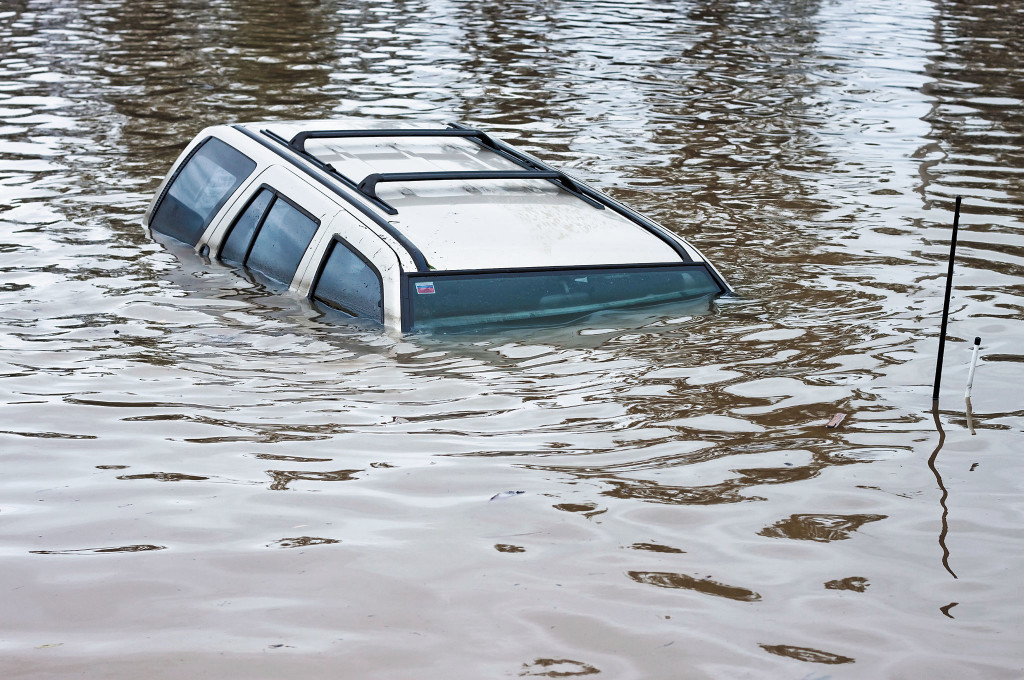
Out-of-Control Motorists
Hurricane-force winds can destroy, or severely damage, traffic lights and signs. Expect chaotic driving conditions, as the rules-of-the-road are replaced by the every-man-for-himself mentality. Add to this distracted, stressed-out, panicked drivers trying to navigate through some very difficult circumstances.
Grid-Down Conditions
It’s not unusual for the power to be out for days, maybe even weeks, after a tropical cyclone. This means closed gasoline stations, blacked-out traffic and streetlights, and possibly a larger number of pedestrians trying to make their way around all the debris. Overnight, this reality will change the way you live and require drastic changes in what you do and how you do it.
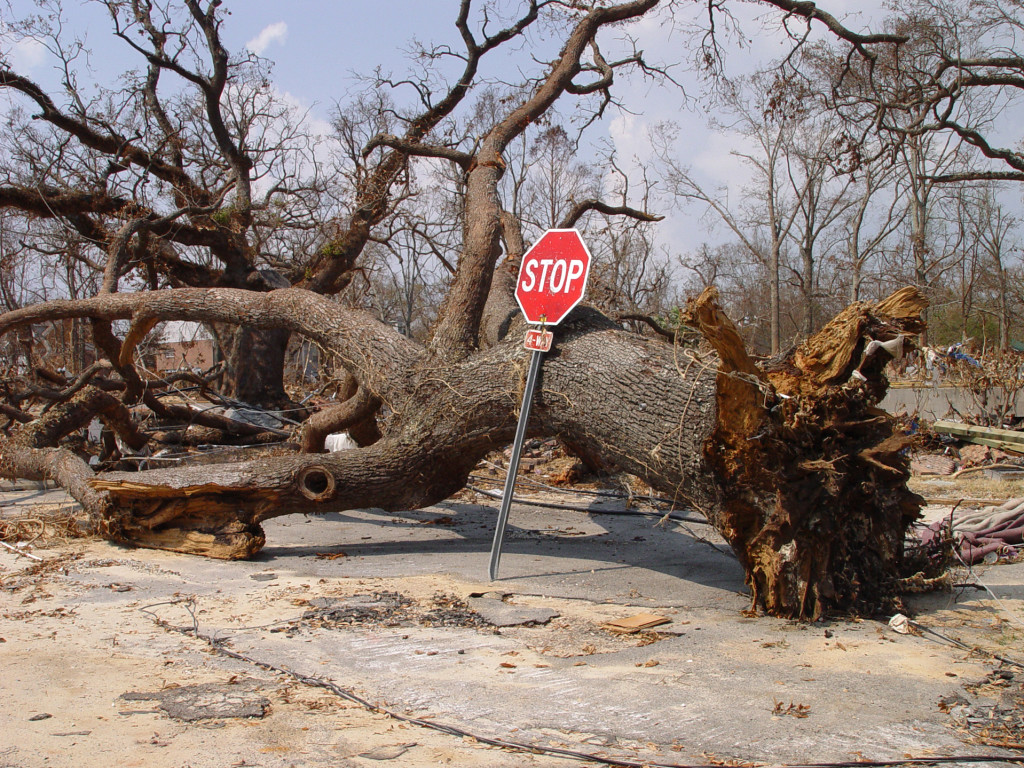
Slow Cleanup
Over the past 20 years, urban centers have been expanding, and weather-related disasters have been increasing in intensity and frequency. Powerful debris-generating tropical cyclones can easily overwhelm solid waste management facilities, and delay recovery efforts. Expect to see entire communities drowning in storm debris and piles of rotting garbage overflowing onto the streets. If previous storms are any indication of what to expect, don’t anticipate a quick cleanup.
Altered Traffic Patterns
Roads may be closed, and traffic redirected to bypass damaged infrastructure. If you need to travel, plan on using alternate routes away from overcrowded main traffic arteries. But be prepared for adverse road conditions since these lesser-used roads will typically be the last to be cleared of storm debris, and major obstacles. The first priority for cleanup crews will be to clear a path for emergency vehicles and utility repair workers.
Post Tropical Cyclone Vehicle Preparation
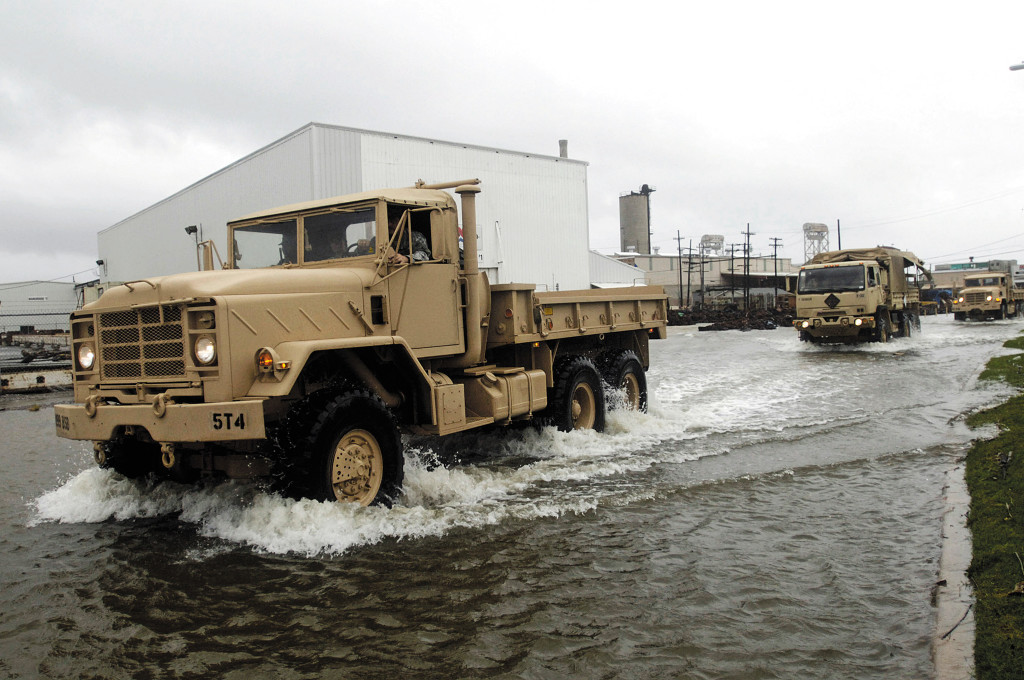
Most vehicles on the road today were designed to be driven on relatively smooth, flat pavement. After a tropical cyclone, many a “daily driver” will not be up to the challenge. Anticipate a high number of abandoned vehicles, as motorists leave their damaged rides on the side of the road and continue on foot. To help reduce the chances of you becoming an unwilling pedestrian, here are some areas to focus on.
The most vulnerable part of your vehicle are probably the tires. Normally, a flat or damaged tire is an annoyance; in the aftermath of a storm, however, it can stop you dead in your tracks. Just having a spare tire is not enough, especially if it’s one of those anemic small spares. You’ll need a full-size spare (preferably more than one), and the ability to repair and re-inflate damaged tires.
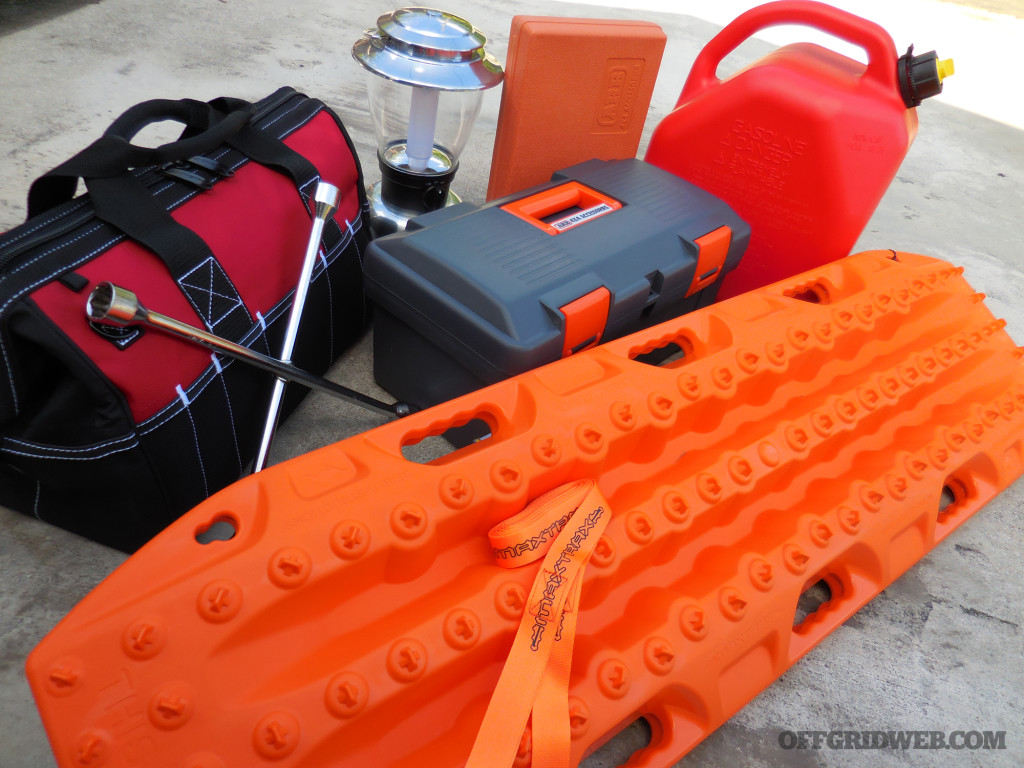
Here are some tips and suggestions:
Multiple Spare Tires
Under normal circumstances, the thought of lugging around more than one spare tire may seem absurd. After a hurricane, however, you’d be crazy to go anywhere without at least two full-size spare tires. The idea is simple — having multiple tires pre-mounted on simple, inexpensive rims will ensure a quick tire change, and avoid time-consuming, dangerous roadside repairs.
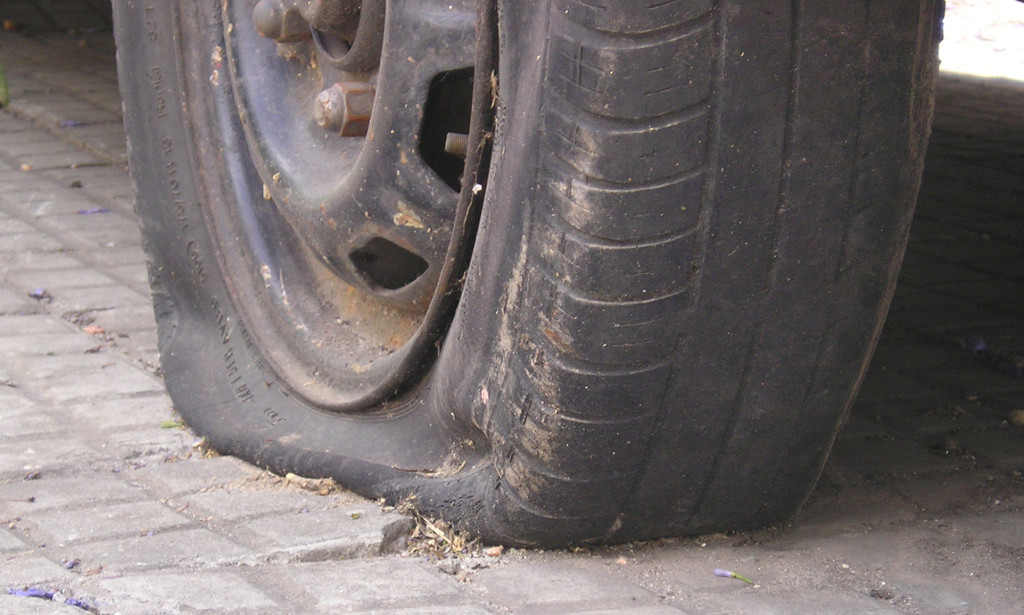
If you plan on driving in a post-hurricane environment, severe tire damage is an absolute certainty; the idea is to resolve the problem quickly, even under the most difficult circumstances. Having multiple spares, is a practical solution that can’t be beat.
Put a Plug In It
Normally, a flat requires nothing more than a trip to the tire shop for a quick repair, or replacement. During an emergency, you’ll need gear to handle it yourself. A temporary tire repair can usually be made by removing the foreign object from the puncture site, reaming the hole, and inserting a sticky, self-vulcanizing plug.
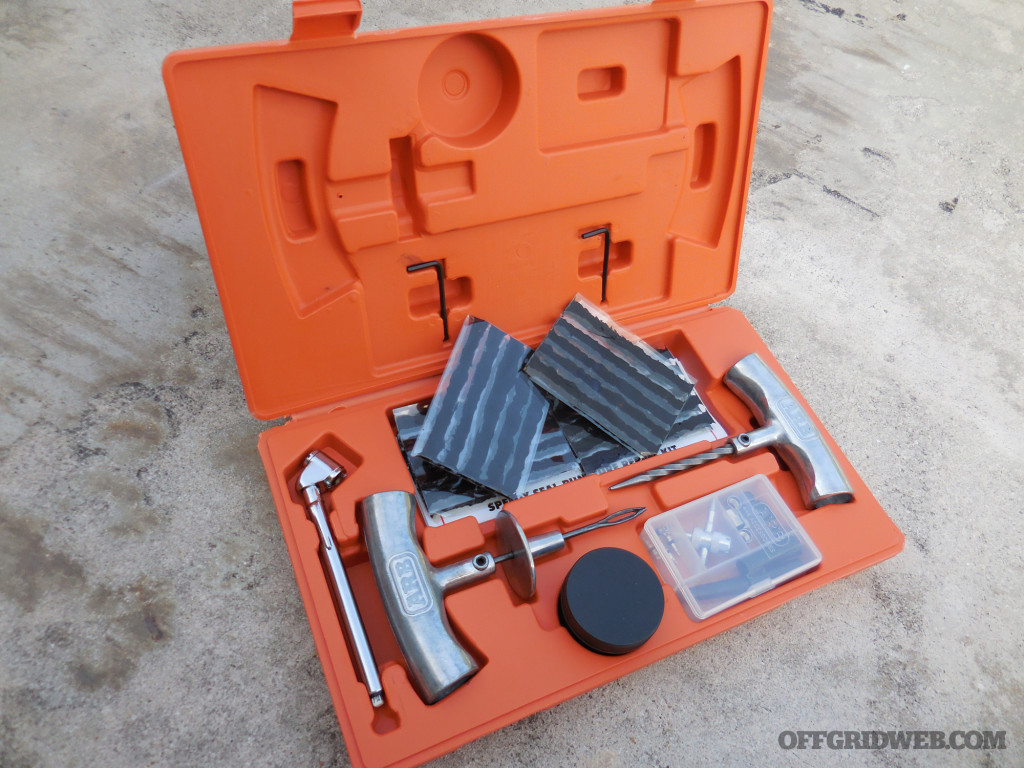
The Speedy Seal tire repair kit from ARB includes all the necessary components to repair tubeless tires. Hard plastic...
The ARB Speedy Seal Tire Repair Kit contains all the necessary components for making emergency repairs on tubeless radial or cross-ply tires, without having to remove the tire from the rim — this is a huge plus. But plugging the hole is only one part of the repair; you’ll also need to re-inflate the tire(s). The ARB High Performance 12V Air Compressor is a portable, self-contained unit that operates using your vehicle’s 12-volt battery to quickly re-inflate tires.
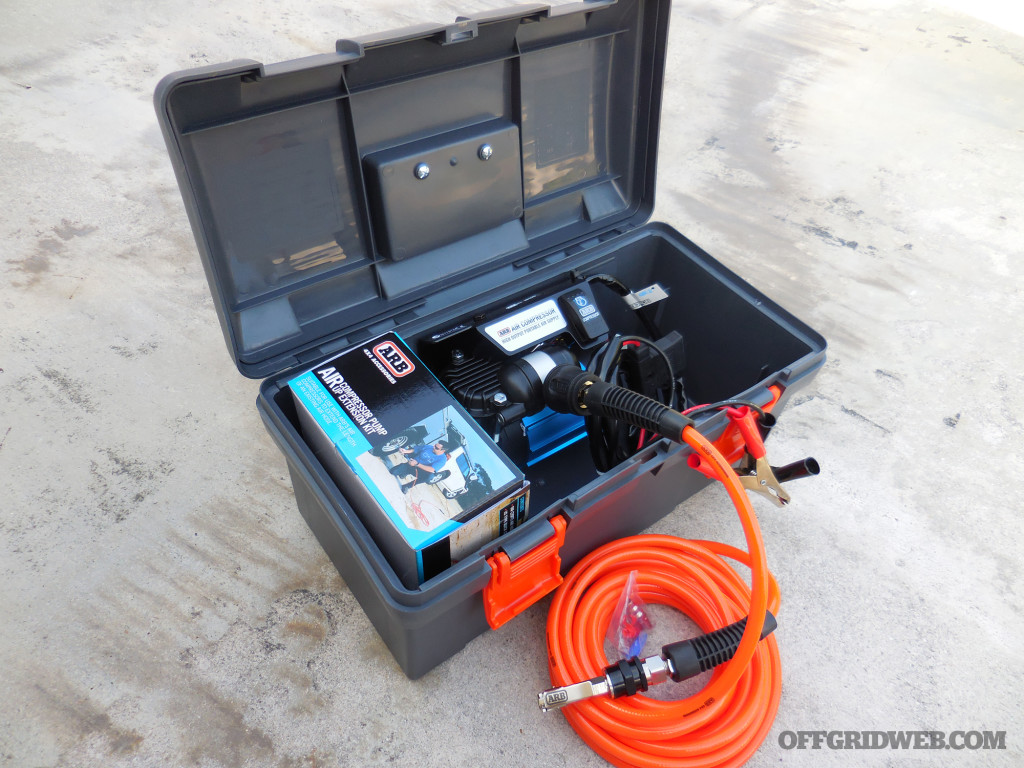
The ARB Portable 12V Air Compressor, (CKMP12) comes in a durable carrying case, includes a 19-foot air hose, and all...
Run-flat Tires
Run-flat, or self-supporting tires have sidewalls that are heavily reinforced to support the vehicle, and to withstand deflation over limited distances, usually 100 to 300 miles, depending on road and driving conditions. While this is an advantage, blowouts are still possible, and sidewall damage can take the tire completely out of service. When you do get a puncture, it’s not always easily repaired, sometimes requiring an expensive tire replacement. While these tires do offer some valuable advantages, they do have limitations and you’ll still need a backup plan.
Self-Sealing Tires
These bad boys have a layer of sealant inside the tire that helps maintain air pressure when punctured. Not bad, but, this feature only works if the puncture is no larger than 5mm, and is near the tread center. Larger punctures, slashes, and tears can still flatten the tire. As with run-flats, self-sealing tires are more expensive than conventional tires, and you’ll still need a plan to replace or repair damaged tires.
Also make sure to have a quality jack to lift your vehicle safely and securely. After a storm, security will be a big concern, and you’ll want to spend as little time as possible exposed on the roadside. Plan and prepare to resolve potential problems quickly and efficiently.
Emergency Tools
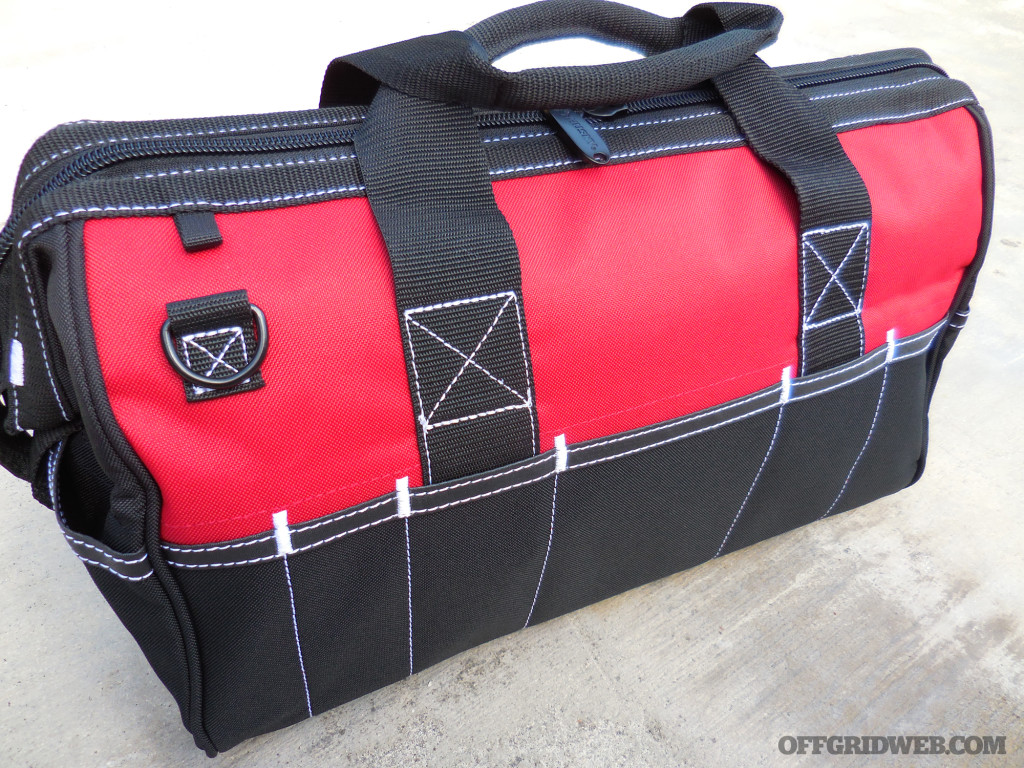
A good bag is the foundation for building your toolkit. Look for sturdy handles, well-reinforced corners, and...
Emergency roadside repairs can often be made with simple hand tools. Sounds easy enough, unless those tools are sitting in your garage. In the aftermath of a crisis, you’ll need to pack the right gear, even for short trips. While a generic tool kit is better than nothing at all, consider putting together your own toolkit. Include multipurpose tools, in the sizes you’re most likely to need for your make and model vehicle. (See the checklist below for basic toolkit suggestions.)
Note: Avoid the all-in-one, roadside emergency tool kits commonly built around useless filler items. Always buy solid tools that won’t fall apart the first time you use them. Test your tools under real-world conditions well in advance of any crisis.
Self-Rescue Gear
After a tropical cyclone fallen trees, utility poles, fences, signs, even dislodged roadway guardrails can block roads and create serious hazards, causing you to make your way around the obstacles. But leaving the paved surface brings the risk of getting stuck in mud, sand, or loose dirt. MAXTRAX is a lightweight vehicle recovery device designed to be safely deployed and used by one person. It provides serious traction in wet or dry conditions, and can even be inverted and used as an improvised shovel to clear debris from around the tires.
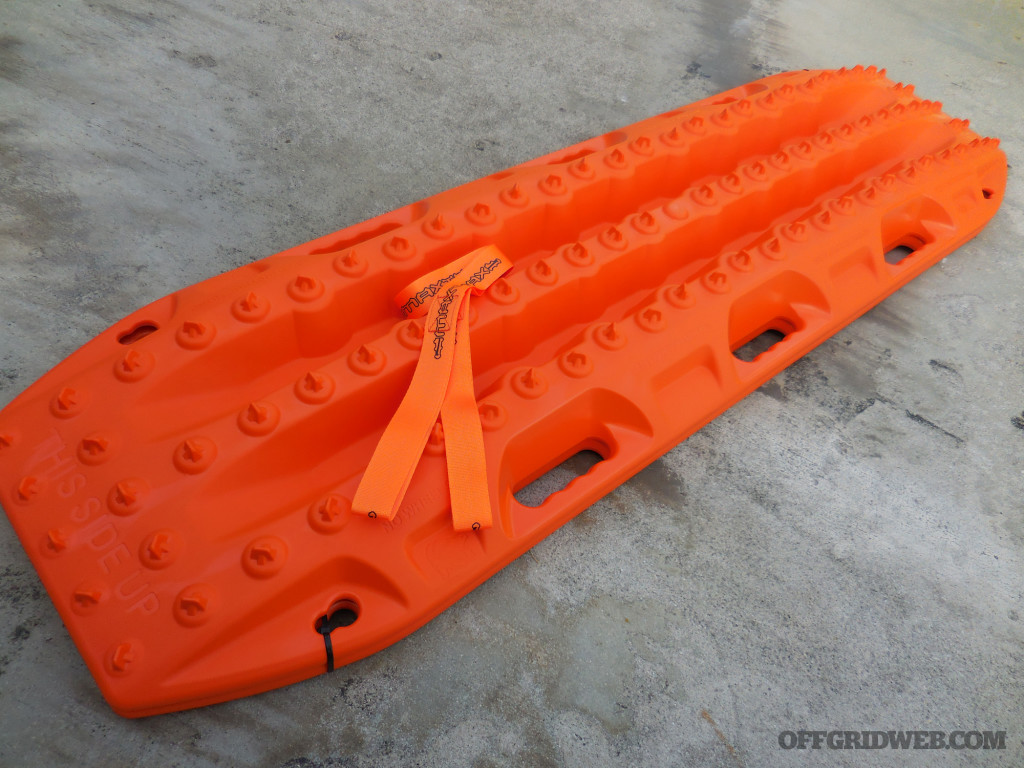
MAXTRAX is a lightweight vehicle extraction tool for safe, quick, and easy recovery in mud, sand, or standing water. Can also be used as an improvised shovel to clear debris from around the tires, and under your vehicle. Bright orange color makes them easy to see in any environment.
Note: It’s also a good idea to pack a small shovel, axe, bolt cutters, handsaw, and machete to help in clearing away small debris, branches, or other obstructions. Flashlights, lanterns, and headlamps with extra batteries should always be in your vehicle, along with an emergency vehicle kit containing flares, jumper cables, gloves, etc., all the stuff you’d need for routine road hazards.
Navigating Checkpoints
Checkpoints are not something we see a lot of here in the USA, but after a tropical cyclone, it’s something we may need to anticipate and prepare for. After a storm, access to certain areas may be managed by law enforcement checkpoints. If you encounter these checkpoints, be prepared to identify yourself and to explain the purpose of your trip. You may be asked for a valid driver’s license or some other government-issued photo identification.
Also be ready to explain the visible contents of your vehicle. (A word to the wise: pack your gear discreetly and don’t dress like Rambo.) The less attention you call to yourself, and your vehicle, the better. Even though checkpoints are usually set up long after the affected neighborhoods have been stripped clean by looters, ironically, innocent people can get jammed-up for lack of proper ID, or for having the “wrong” look.
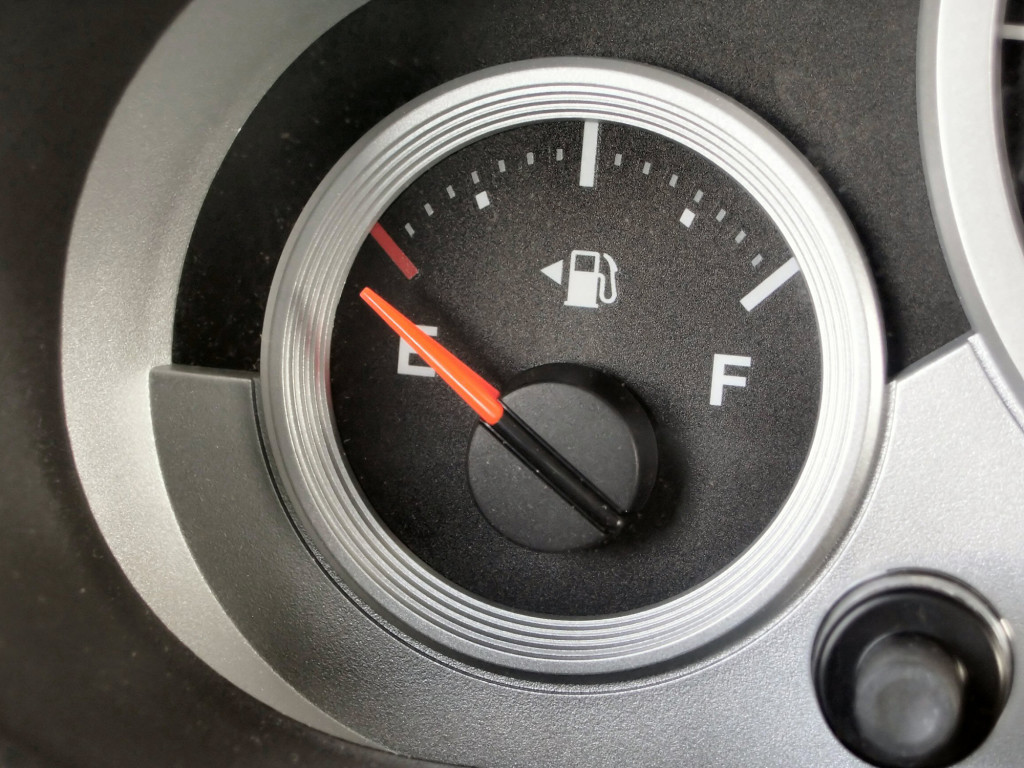
Fuel
You should expect gasoline stations to be closed, completely dry from the pre-storm run, or at best unable to process any form of credit or debit cards. If you’re caught short on gas, or simply want to top-off the tank and you’re lucky enough to find a functioning station, expect long lines and to pay in cash. If you’re looking to fill gasoline containers, make sure to bring your own. After a storm, gasoline containers are almost impossible to find, at any price.
Mindset
During any crisis, some people will be at their best, while others will unfortunately be at their worst, especially if rescue efforts don’t arrive as quickly as expected. Getting through this chaos, and adjusting to the new (although temporary) normal is never easy, but having the right mindset will help you get through the madness.
It’s really important that you understand and accept that, at least for a while, you’ll be on your own. Don’t expect any outside help. Accepting this reality and planning for it, is possibly one of the most important things you can do for yourself, and your family. Take the time to acquire the necessary knowledge and skills, to take care of your own problems. Real-world practice will help you develop confidence and expose weaknesses.
Rookie Mistakes to Avoid After a Hurricane
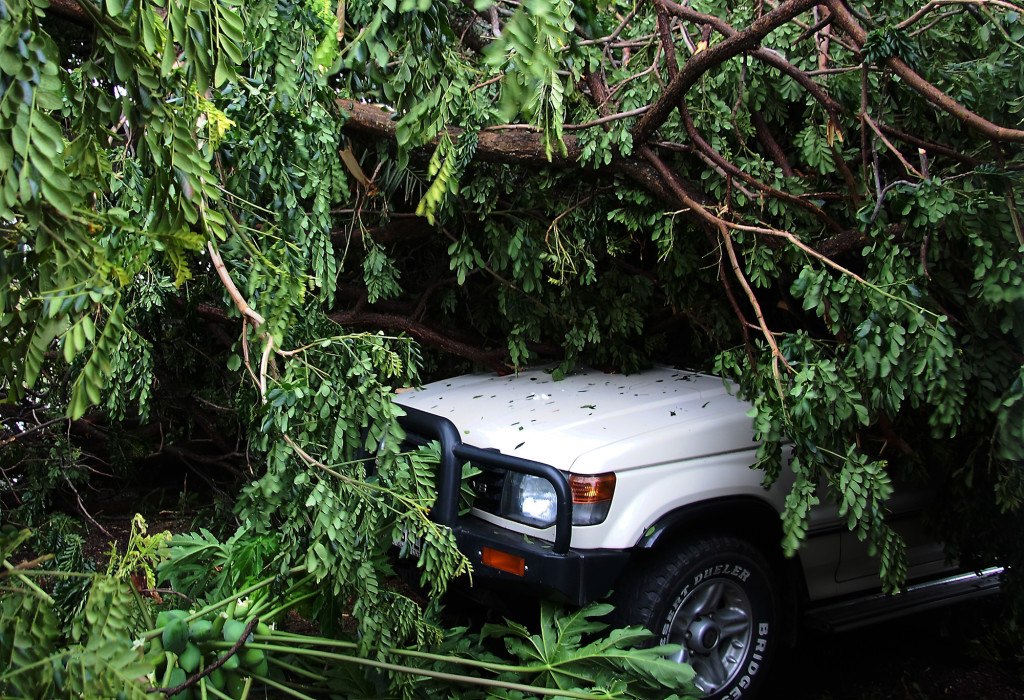
Driving a Storm-Damaged Vehicle
Perform a throughout inspection of your vehicle, including the undercarriage, the engine compartment, and any portions of the vehicle exposed to the effects of the storm, before taking the vehicle on the road. Look for water, wind, and flying debris damage. If in doubt, don’t take the risk of driving an unsafe vehicle.
No Survival Supplies
Setting out, on even a short trip, without essential survival supplies, is asking for trouble. Pack water, calorie-dense energy food, a first-aid kit and daily medications, communications, spare clothes, and extra shoes.
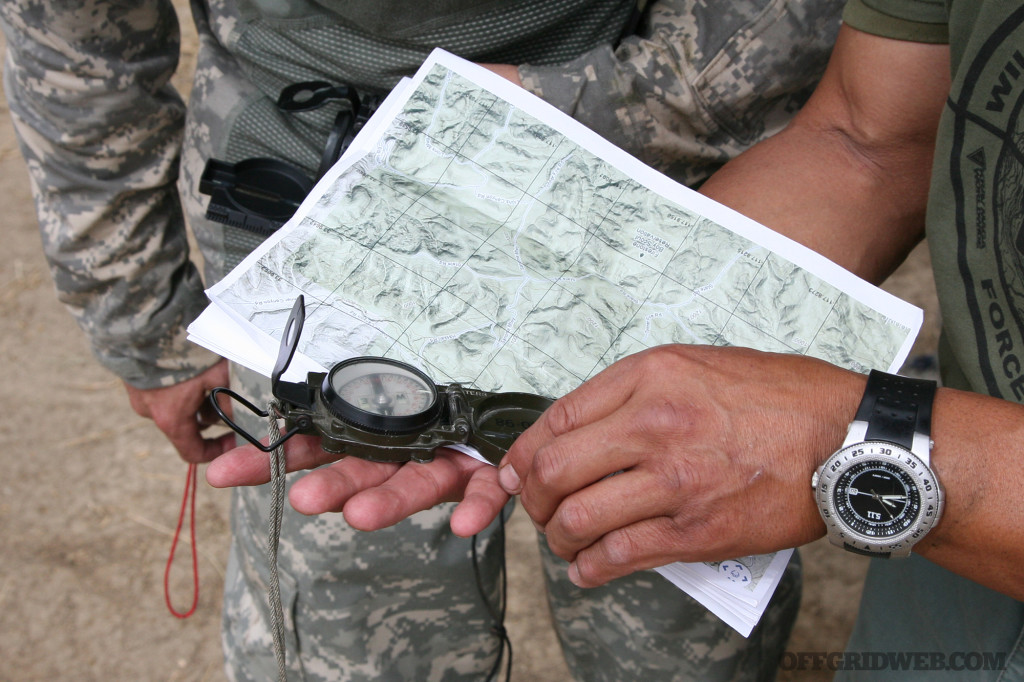
Failing to Leave a Trail
If things go badly during your trip, will others know where to start looking for you? Draw out a map showing your anticipated route and itinerary. If you don’t arrive at your destination, at least others will know where to start their search.
Underestimating the Dangers
Just because the storm has passed doesn’t mean it’s safe to venture out. We all know that storms kill people, but many of us are surprised to learn that there are often more fatalities and serious injuries in post-storm related incidents. The period immediately after a storm is usually the most dangerous, and an excellent time to shelter in place and avoid the chaos. If you must go out, do so with extreme caution, and never by yourself.
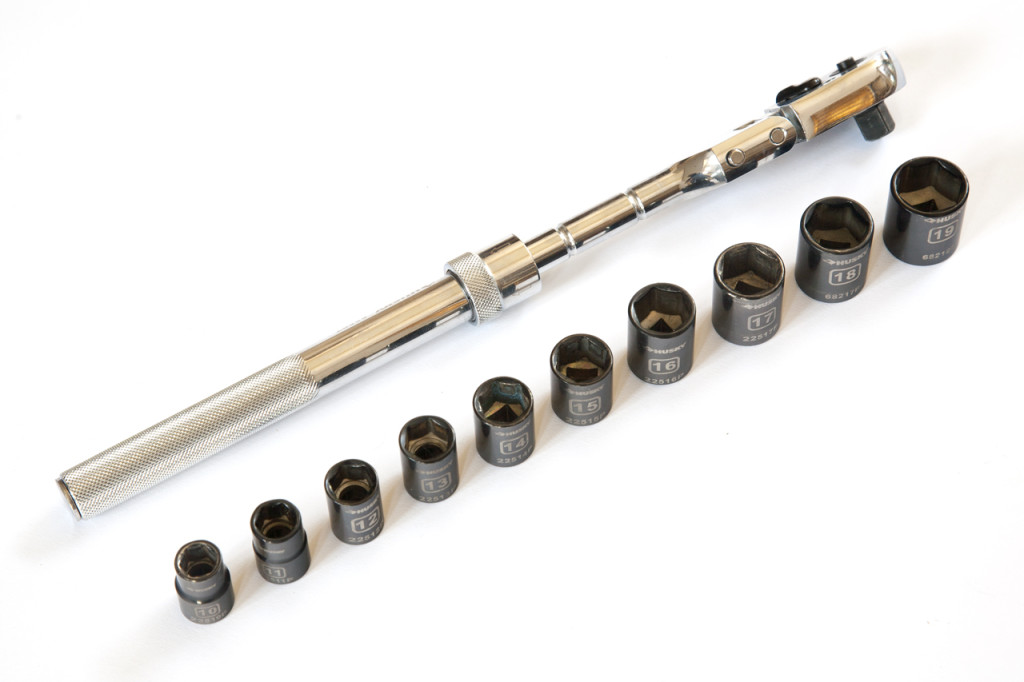
Basic Toolkit Checklist
Pack quality tools that you’re most likely to need for your vehicle during an emergency. At minimum, your kit should contain the following items:
- Set of socket wrenches
- Screwdrivers — full set
- Open and adjustable wrenches
- Adjustable, Lineman’s and Diagonal pliers
- Multitool
- Bolt cutters, crowbar, and hammer
- LED lantern, flashlight and extra batteries
- Duck and electrical tape, tie wraps
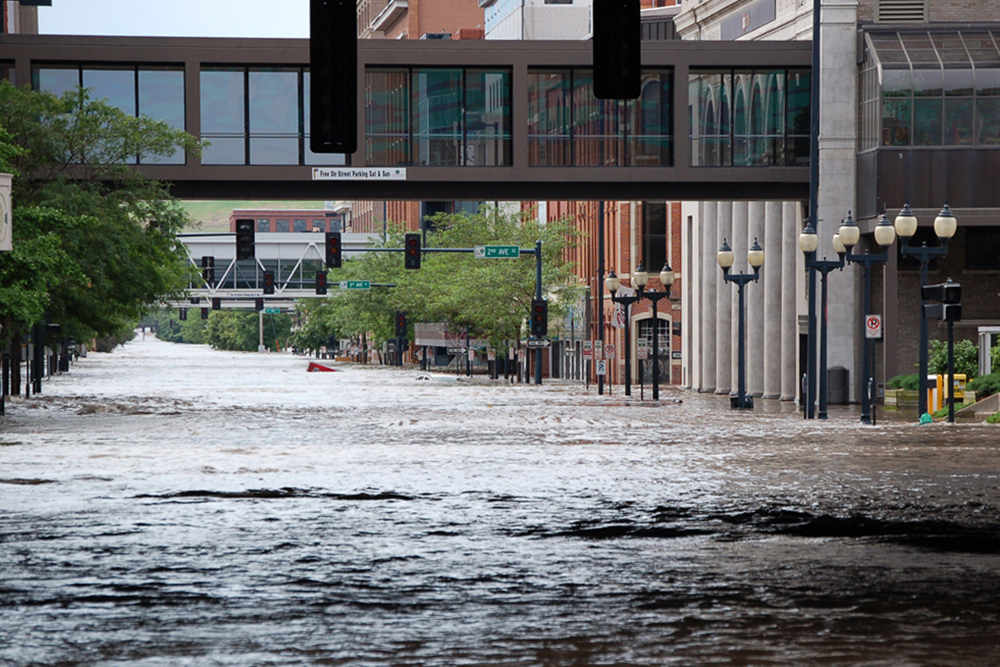
Don Becker / U.S. Geological Survey
Speaking From Experience: Hurricane Andrew
In the early morning hours of August 24, 1992, Hurricane Andrew tore a destructive path through South Florida, causing more than $26.5 billion in property damage (in 1992 dollars), and leveling more than 100,000 houses in Miami-Dade County. Overnight, this Category 5 storm transformed a thriving community into terrifying piles of rubble.
At first light of day, the true extent of the devastation became painfully obvious our family home was completely destroyed, and we were forced to evacuate. Using the rear bumper of my Jeep as a battering ram, I pushed the jammed garage door off its tracks, and began a long and difficult journey. It would take many hours of painfully slow travel, over roads blanketed by storm debris, fallen trees, toppled utility poles, and tangled power lines, to get to safety.
As I look back today, I realize just how lucky we were. Despite the loss of our home, and most of our personal property, it could have been much worse. Since Andrew, I have weathered many more tropical cyclones, but one constant remains — there is no substitute for skills, planning, gear, and the proper mindset. It also doesn’t hurt to be lucky.
Wrap-Up
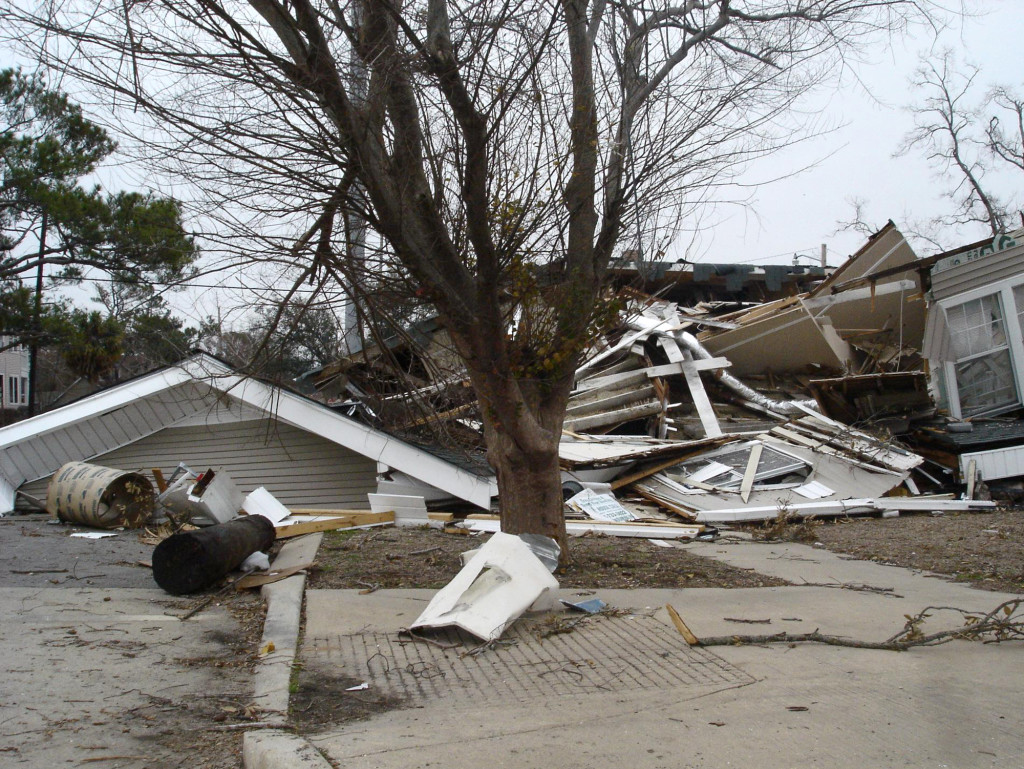
Hitting the streets after a hurricane, even for a short trip, requires skills, gear, supplies and the right mindset. Understanding the challenges, and knowing how to manage the situation will dramatically increase the odds in your favor, and help you safely overcome the obstacles. When the time comes you will either be prepared, or you may find yourself among the many victims, waiting for help to arrive. Now is the time to give yourself every possible advantage. Stay safe, and be prepared.
Sources
Read More
Don’t miss essential survival insights—sign up for Recoil Offgrid's free newsletter today!
Check out our other publications on the web: Recoil | Gun Digest | Blade | RecoilTV | RECOILtv (YouTube)
The post Tropical Cyclone Aftermath: Post-Storm Survivor Strategy appeared first on RECOIL OFFGRID.
By: Nick Italiano
Title: Tropical Cyclone Aftermath: Post-Storm Survivor Strategy
Sourced From: www.offgridweb.com/survival/tropical-cyclone-aftermath/
Published Date: Sun, 13 Oct 2024 11:00:27 +0000
------------------------
Did you miss our previous article...
https://bushcrafttips.com/bushcraft-news/preppers-are-not-safe-from-shtf-and-tragedy
 What is BushcraftSurvival SkillsToolsVideosBushcraft CampsBushcraft KitsBushcraft ProjectsPrivacy PolicyTerms And Conditions
What is BushcraftSurvival SkillsToolsVideosBushcraft CampsBushcraft KitsBushcraft ProjectsPrivacy PolicyTerms And Conditions
